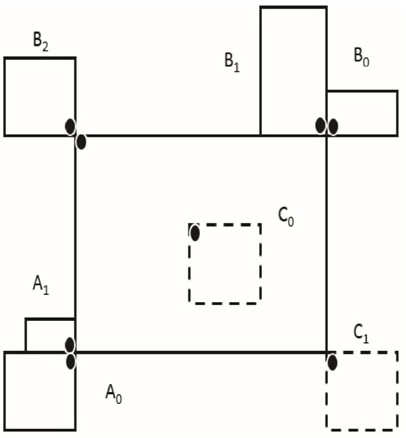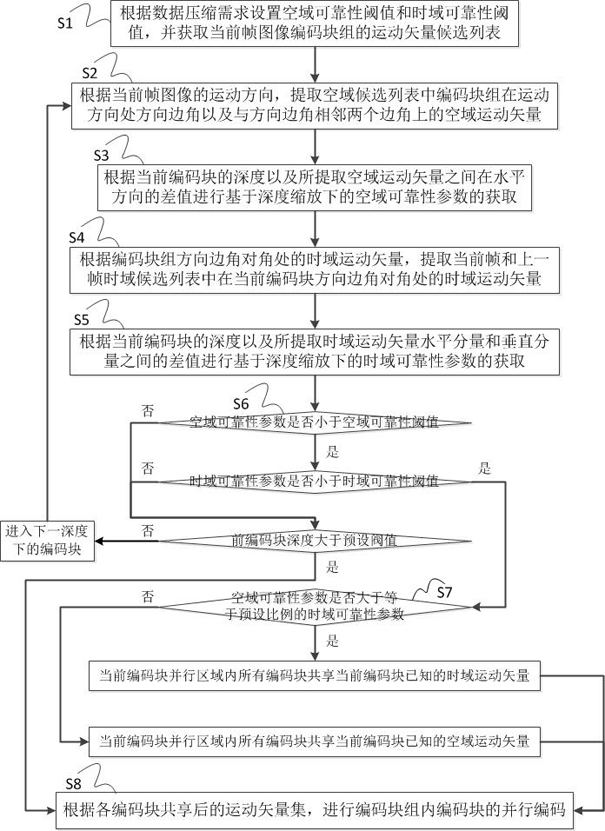Inter-frame image parallel coding method based on time-space domain prediction
A coding method and technology in the temporal and spatial domains, which are applied in the field of parallel coding of inter-frame images based on prediction in the temporal and spatial domains, can solve the problem of difficulty in synchronous parallel coding of adjacent coding blocks, and achieve the effect of reducing the loss of bit rate and improving the effectiveness.
- Summary
- Abstract
- Description
- Claims
- Application Information
AI Technical Summary
Problems solved by technology
Method used
Image
Examples
Embodiment 1
[0039] In the existing H.265 / HEVC technology, some parallel tools can be used to improve the parallelism of motion estimation. Generally speaking, the parallel level within a largest coding unit (LCU) can be divided into: coding block group (CU group) level and coding block (CU) level parallelism. In the parallel region (PMER), there are some coded blocks whose motion vector candidates are known, and some coded blocks whose motion vector candidates are unknown. For CU group-level parallelism, candidate motion vectors for all prediction units (PUs) in the parallel region PMER can be constructed in parallel. However, for CU-level parallelism, the candidate motion vectors of the prediction units inside the CU share the legal candidate motion vectors outside the CU. At the same time, while improving the encoding parallelism, it is also necessary to balance the encoding efficiency to avoid excessive bit rate loss. Based on the above requirements, such as figure 1 As shown, the p...
Embodiment 2
[0081] In order to better prove the effectiveness of the present invention, this embodiment demonstrates the technical effect of the present invention by citing a specific simulation experiment, and compares the algorithm proposed by the present invention with the rate-distortion and Calculate the complexity to verify the performance of the algorithm. The experimental test uses standard H.265 / HEVC video sequences, which have different resolutions and image texture features. The configuration of the simulated experimental environment is shown in Table 1.
[0082] Table 1: Simulation experiment environment
[0083]
[0084] In order to evaluate the performance of the algorithm proposed by the present invention, the evaluation standard of the algorithm performance adopts BDBR and BDPSNR, and the average encoding time TS calculation method is as follows:
[0085]
[0086] in T HM ( QP i )with T pro ( QP i ) are respectively the coding time of the reference software...
PUM
 Login to View More
Login to View More Abstract
Description
Claims
Application Information
 Login to View More
Login to View More - R&D
- Intellectual Property
- Life Sciences
- Materials
- Tech Scout
- Unparalleled Data Quality
- Higher Quality Content
- 60% Fewer Hallucinations
Browse by: Latest US Patents, China's latest patents, Technical Efficacy Thesaurus, Application Domain, Technology Topic, Popular Technical Reports.
© 2025 PatSnap. All rights reserved.Legal|Privacy policy|Modern Slavery Act Transparency Statement|Sitemap|About US| Contact US: help@patsnap.com



